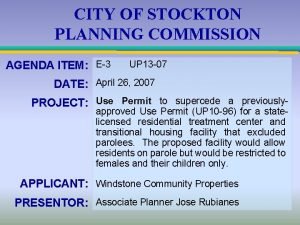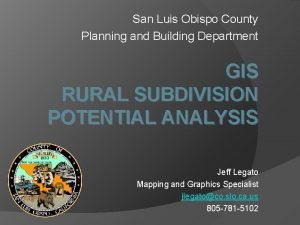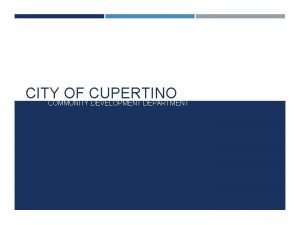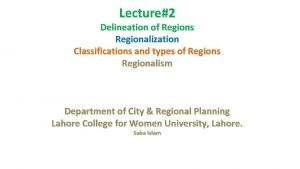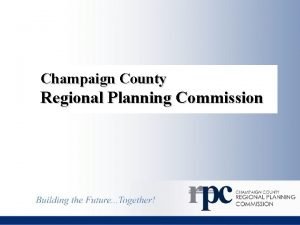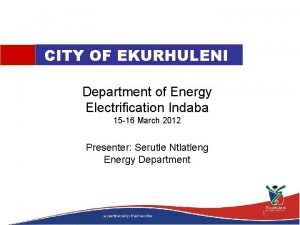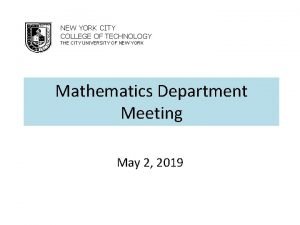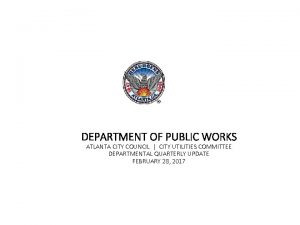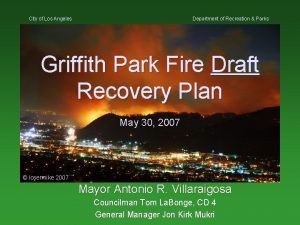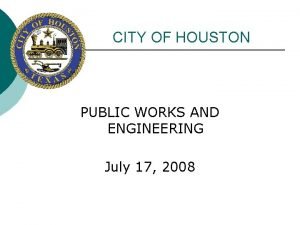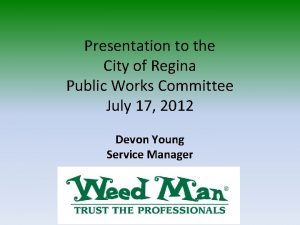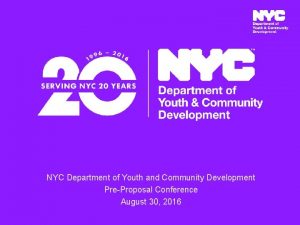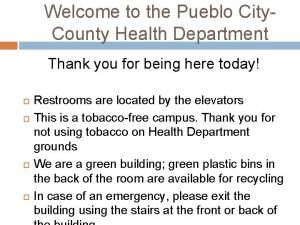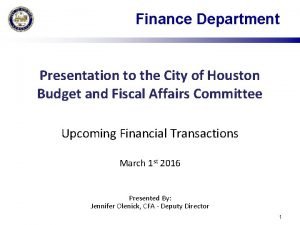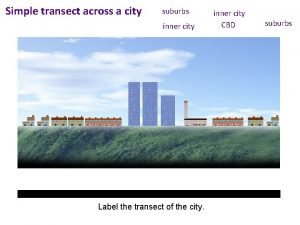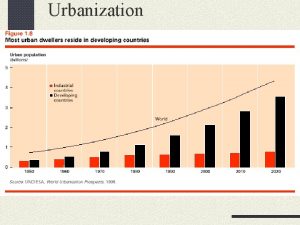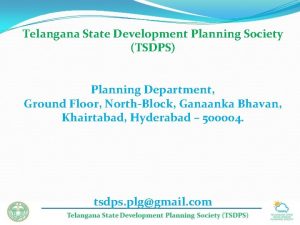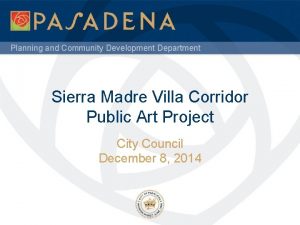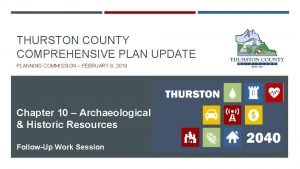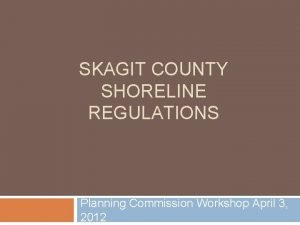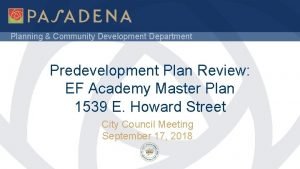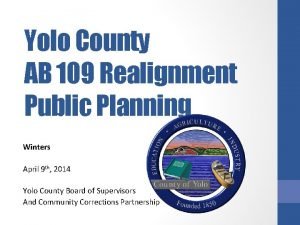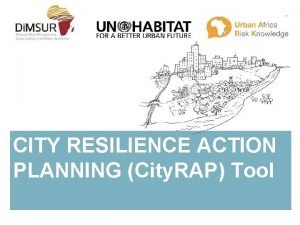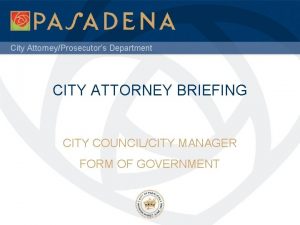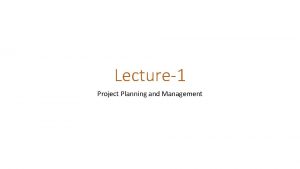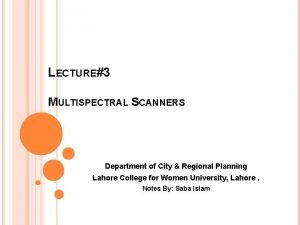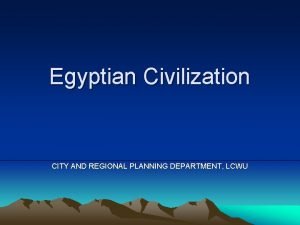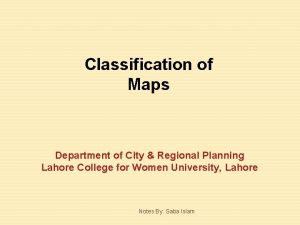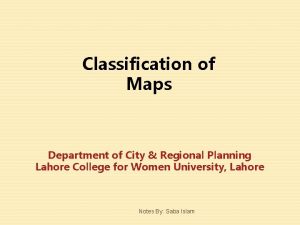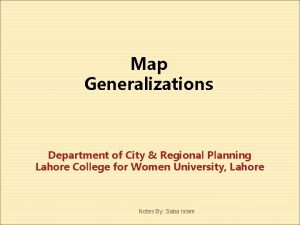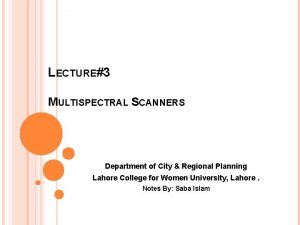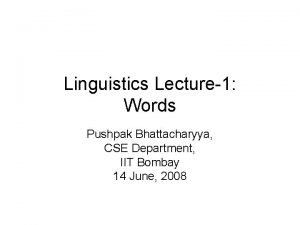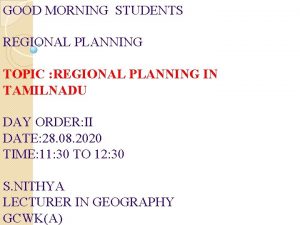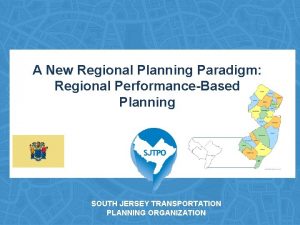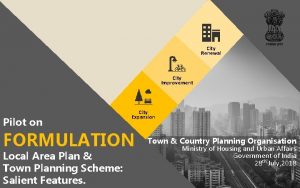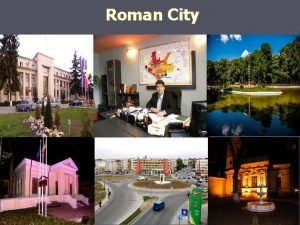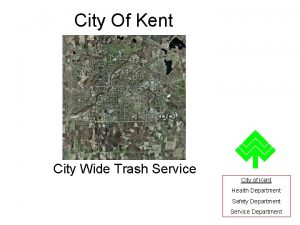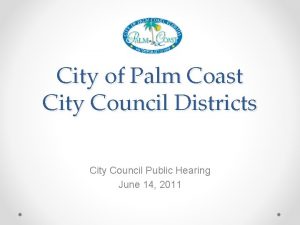Lecture1 What is Regional Planning Department of City

































- Slides: 33

Lecture#1 ? What is Regional Planning Department of City & Regional Planning Lahore College for Women University Saba Islam

Traditional and Critical Scientific Methodologies; a Comparison Traditional Scientific Methodology “…characterized as acquiring knowledge for the sake of knowledge” Critical Scientific Methodology “…characterized as acquiring knowledge for the welfare of homosapiens” Process • Observation and experiment • Generalization • Formulation of hypotheses • Attempt of verification • Proof or refutation Process • Problem (failure of an existing theory) • Formulation of a new theory • Deduction of testable hypotheses • Testing theory • Choice between competing theories

Components of Scientific Theory What is Theory? What is Hypothesis? “…a set of logically linked, mutually consistent hypotheses” “…the assertions or propositions of a theory. ” They may have two forms namely; Axioms & Theorems Axioms? Theorems? “…the statements that can’t be deduced from other statements. ” “. . . the statement that can be deduced from axioms and other statements. ” (Often referred to as Intuitive Knowledge) (Often referred to as Acquired Knowledge)

Linking with The Previous Discussion, Regional Planning Relates To Critical Scientific Theory, It Is mainly Based On Acquired Knowledge, And It Is Always Problem Based. Therefore, Before Defining Regional Planning, One Needs to Know What is Regional Problem? Regional Problems Regional planning Disparities Inequalities Imbalances Centralization/Polarization Depreciation Differences Impair Odds Heterogeneity Exclusiveness Distinctiveness …brings in Parity …promotes Equality …eliminates Imbalances …advocates decentralized growth …appreciates the depressed areas …reduces the differences …wipes out impaired settings …recommends evenly/just treatment …culminates into homogeneity …highly inclusive in nature …envisions similarities and unifications

Modern Planning History; Crises…Response…Crises q Paul Knox—an urban planner, argues that the profession of planning emerges out of series of crises and people’s responses to them – Health crises (epidemics) – Social crises (riots, strikes) – Other crises (fire, flood, etc. ) q Planning tries to mitigate the adverse elements of capitalism, but also makes capitalism viable over the long term Response Crises

Roots of Modern Planning; Romanticism vs. Progressivism q Romantics were utopian visionaries o generally attempted to balance city/country opposition o seldom saw their plans actualized o had a major influence on planning profession q Progressives were activists o motivated by desire to reduce poverty or the harmful effects of poverty o Hull House (Jane Addams)

Crises… Response… Crises Complex Game 1 2 3 4 5 6 7 8 9 10 11 12 13 14 15 16 17 18 19 20 21 22 23 24 25 26 27 28 29 30 31 32 33 34 35 36 37 38 39 40 41 42 43 44 45 46 47 48 49 50 51 52 53 54 55 56 57 58 59 60 61 62 63 64 Simple Game

Let’s change the rules of the game!!

Concluding Regional Planning… • • • It related with critical scientific theory It is corrective mechanism of planning crises Dualism (two or more entities) Growth management Inducing growth Supra urban but below national; intermediary Linkages, flows, and networks Holistic; Geddes's TRIADS (Place, Work, Folk) Regionalization • Inter and intra regional perspective

Regional Planning is essentially a process of orderly and systematic anticipation of the future of a region, region involving recommendations of the necessary remedial and constructive actions by public and private agencies to achieve the objectives of the planed regional community S. Rengasamy

Regional Planning is the process of formulating and clarifying social objectives in the ordering of activities in supra-urban space John Glasson

Regional Planning deals with the efficient placement of land-use activities, infrastructure and settlement growth across a larger area of land than an individual city or town Wiki

Universities Polarization in Punjab Categories Lahore Faisalabad Multan Rawalpindi Gujranwala Bahawalpur Sargodha Gujrat Taxila Wah 12 4 3 3 0 1 1 0 Public Private 17 1 1 0 0 0 1 1 Total 29 5 4 3 1 1 2 1 % 60. 42 10. 42 8. 33 6. 25 2. 08 4. 17 2. 08 70 Higher Education is highly polarized in Punjab and Lahore act as primate city based on tertiary or higher education provision in Punjab 60 50 40 30 20 10 0 Lahore Faisalabad Multan Rawalpindi Gujranwala. Bahawalpur Sargodha Gujrat Taxila Wah

Therefore, regional planning mainly deals with inequalities, imbalances, concentrations and polarizations and alter them into: egalitarianism, balanced development, decentralized and interconnected, generative systems to qualify as a corrective science.

Roberta Capello (2011)

Chronological order of Regional Theories Location Theories Regional Growth Theories Local Development Theories Local Growth Theories Roberta Capello (2011)

Theoretical Perspectives/Views 1. Classical Economist’s View: The Classical economists hardly evince any interest in the spatial dimension of economic development. They believed that factor flows/ market forces would bring equilibrium automatically. They argued that wage and income levels among regions would not last long. They further argued that labor would flow from (migration) low wage region to high wage region, While capital will flow in the reverse direction (i. e. , from high wage region to low wage regions). Later on, classicalists view failed, and many economists started questioning the “Self Equilibrating Model” of the classical economists. • Natural negative feedback loop/system Labor Developing countries Developed countries capita

Theoretical Perspectives/Views 2. Marxist View: Regional disparity is the characteristic feature of capitalism and is aggravated by rivalry and competition and the search of maximal profits and is the very nature of capitalist relations of production and by the private ownership of the means of production. • Sportsmanship versus gamesmanship • Insatiable human appetite

Theoretical Perspectives/Views 3. Perrouxian View 1. Growth does not appear everywhere and at the same time. 2. It manifests itself in points or poles of growth with variable intensities. 3. It spreads by different channels and with varying terminal effects for the economy as a whole. French Economist Perroux [Perroux heavily relied on Schumpeter’s theory of economic development to explain why growth appears in a particular place. A/C to Schumpeter “development occurs as a result of discontinuous spurts in a dynamic world”] According to Perroux once growth emerges in a particular place, it becomes center of growing economic activities and induces growth in the dependent regions. A/C to Perroux the process of economic development is essentially unbalanced, and the centers of growth may give birth to other centers or it may become a center of stagnation. ● William Ogburns theory of Cultural Lag ● Volcano theories in physical science

The tectonic plate moves over a fixed hotspot forming a chain of volcanoes The volcanoes get younger from one end to the other.

Theoretical Perspectives/Views 4. Myrdal’s View: In his book, “Economic Theory and Underdeveloped Regions” he presented the “Cumulative Causation Model”. Swedish Economist Gunnar Myrdal According to this model, economic development having started in some advantageous place continues to develop in that place and the play of market forces normally tends to increase rather than decrease inequalities between regions. Myrdal goes on to argue that once growth starts through historical accident in a locality, “the ever increasing internal and external economies–(lower average costs of production and increased rate of output, availability of trained workers, communication facilities, access to larger markets) tends to sustain the continuous growth at the expense of other localities/regions—where relative stagnation or regression became the pattern”.

Theoretical Perspectives/Views Myrdal explains the impact of the growing region (nucleus) on rest of the economy with the help of two opposite kinds of forces, which he calls the “Spread effect” and “Back wash effect”. 1. “The Spread effect” – refers to all growth inducing effects i. e. , inflow of raw materials, new technologies, demand for the agricultural products, If strong enough, these forces may start a cumulative expansionary process in the lagging regions. 2. “The Backwash effect” – refers to all adverse effects i. e. , withdrawal of skilled labor from underdeveloped regions, capital and goods–all of which rush to the dynamic center of development. Due to the accumulation of concentration advantages, the backwash effect predominates. This of course, increases the relative backwardness of underdeveloped regions. Thus Myrdal made a synthesis of various elements involved in the process of regional growth including agglomeration economies, factor flows, social environment, and role of public policy. ● Natural positive feedback loop/system


Theoretical Perspectives/Views 5. Hirschman’s View: Albert Hirschman, an American Economic Professor, explained economic growth process in terms strikingly similar those of Myrdal. Hirschman felt that “ Inter regional inequality of growth is an inevitable concomitant and condition of growth itself”. Hirschman explained his concept with the help of two terms i. e. , ” Trickling–down effect” effect and Polarization effect”. effect Trickling down effect (analogous to Myrdal’s Spread effect) Polarization effect (analogous to backwash effect). Some economists criticized Hirschman’s theory of “economic transmission”– for having created terminological confusion for the terms already accepted in the scientific language.

Regional Development Regional development is the provision of aid and other assistance to regions which are less economically developed. Regional development may be domestic or international in nature. The implications and scope of regional development may therefore vary in accordance with the definition of a region, and how the region and its boundaries are perceived internally and externally.

Why Regional Development Planning? • The region is the intermediate spatial unit where national policies and local interests merge, and where functional interrelationship of development constraints and potentials is the most concrete…intermediary • The regional approach to national development makes it possible to deal with the regions and their specific problems and potentials individually, individually without loosing the national perspective…subsidiarity • The problems of mass poverty, unemployment and occasional employment can not be attacked entirely on a national or on a local level They must be tackled at the regional and national scales simultaneously…addressing basic issues/needs

Why Regional Development Planning? • The regional approach brings the understanding of development and its prospective outcomes closer to the local population concerned and who are not only considered as an object of development, but an active participant…fusion of people and money • As a precondition to development, a certain level of infrastructure in the forms of roads, railways, ports, storage facilities, energy and communication networks must be acquired The location of such infrastructures lies in the overall framework of regional development scheme…infrastructural demands

Why Regional Development Planning? • Regions provide a convenient spatial base for coordinating the activities of a wide variety of specialized ministerial sectoral programs and projects…coordination platform for development: • On one hand it refers to horizontal and vertical coordination of planning activities on the regional level, and • On the other hand, it refers to the aspects of participation aiming at the increased involvement of the people at the grassroots levels.

Why Regional Development Planning? Basically the purpose of Regional Planning is to correct the distortions in the planning process. General objectives of Regional Planning addresses following issues/problems: 1. The clash between economic goals (formulated in terms of outputs only) and the social development objectives and needs. 2. The concentration of industry and infrastructure in a few areas thus creating enclaves of modernization in the midst of growing economic stagnation. 3. Undue emphasis on heavy industry to the neglect of agriculture 4. Promoting a pattern of education unsuited to the needs of general masses 5. Problems of inadequate employment opportunities. S. Rengasamy

Why Regional Development Planning? 6. Problems of inadequate exploiting of resources in a particular area. 7. Overcoming limitations on agriculture through the use of most advanced technology. 8. The problem of improving access to and the distribution of the higher order type of social facilities. 9. The problem of insecurity in some newly acquired territorial addition to the state. 10. The problem of groups experiencing social economic or political disadvantages in some area of the ‘nation state’. 11. The problem of experiencing physical discomfort through overcrowding and congestion. S. Rengasamy

Regional Development Planning: a practical example

Policies for Development in Delhi Regional Plan-2021 The analysis of the proposed population vis-à-vis actual population indicate that with effective cooperation of the participating States, the policy to contain the population of Delhi, and to harness the spread of the developmental impulse and agglomeration economies generated by Delhi for harmonized, balanced and environmentally sustainable spatio-economic development of the NCR has been substantially successful. The broad objective of the Regional Plan-2021 "for promoting growth and balanced development of the Region” is to be achieved by proceeding objectives:

Specific Objectives in Delhi Regional Plan-2021 ¤ Providing suitable economic base for future growth by identification and development of regional settlements capable of absorbing the economic development impulse of NCT-Delhi. ¤ Providing efficient and economic rail and road based transportation networks (including mass transport systems) well integrated with the land use patterns. ¤ Minimizing the adverse environmental impact that may occur in the process of development of the National Capital Region. ¤ Developing selected urban settlements with urban infrastructural facilities such as transport, power, communication, drinking water, sewerage, drainage, etc. comparable with NCT-Delhi. ¤ Providing a rational land use pattern in order to protect and preserve good agricultural land utilize unproductive land for urban uses. ¤ Promoting sustainable development in the region to improve quality of life. ¤ Improving efficiency of existing methods of resource mobilization and adopt innovative methods of resource mobilization and facilitate, attract and guide private investment in desired direction.
 Stockton planning commission
Stockton planning commission City of san luis obispo building department
City of san luis obispo building department City of cupertino planning department
City of cupertino planning department Types of region
Types of region Brookens building
Brookens building Chapter 8 location planning and analysis
Chapter 8 location planning and analysis Helphopehome
Helphopehome Ekurhuleni energy department
Ekurhuleni energy department City of palm coast water department
City of palm coast water department Math department city tech
Math department city tech Tuba city fire department
Tuba city fire department Atlanta department of public works
Atlanta department of public works City of los angeles department of recreation and parks
City of los angeles department of recreation and parks City of houston design manual
City of houston design manual City of hamilton public works department
City of hamilton public works department Nyc department of youth
Nyc department of youth Pueblo city county health department
Pueblo city county health department Pasadena city college police department
Pasadena city college police department Geoweb north vancouver
Geoweb north vancouver City of houston finance department
City of houston finance department Griffin ford model example city
Griffin ford model example city Cbd inner city suburbs
Cbd inner city suburbs Is mexico city a primate city
Is mexico city a primate city Tsdps full form
Tsdps full form Fire department succession planning
Fire department succession planning Sierra madre planning department
Sierra madre planning department Siskiyou county planning department
Siskiyou county planning department Thurston county planning department
Thurston county planning department Skagit county planning commission
Skagit county planning commission Prince edward county planning department
Prince edward county planning department Pasadena planning department
Pasadena planning department Temecula gis
Temecula gis Yolo county planning department
Yolo county planning department Baltimore county zoning
Baltimore county zoning
